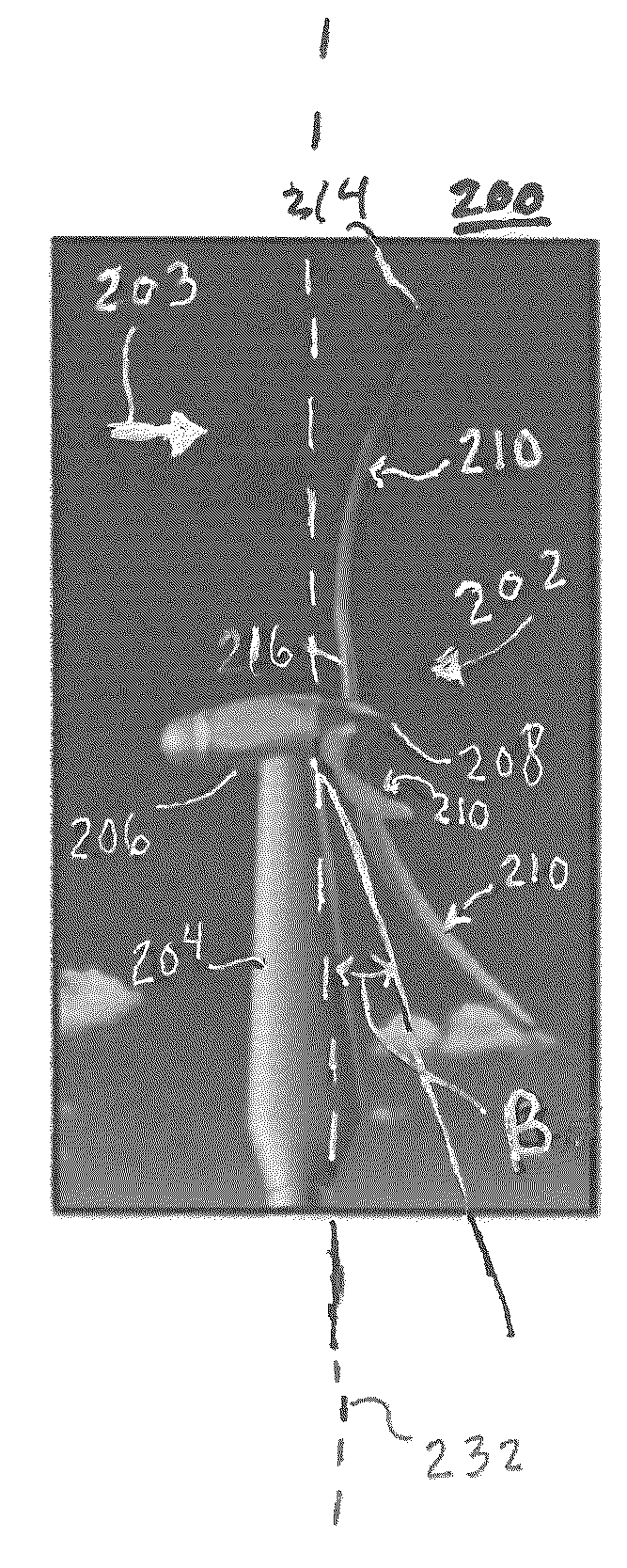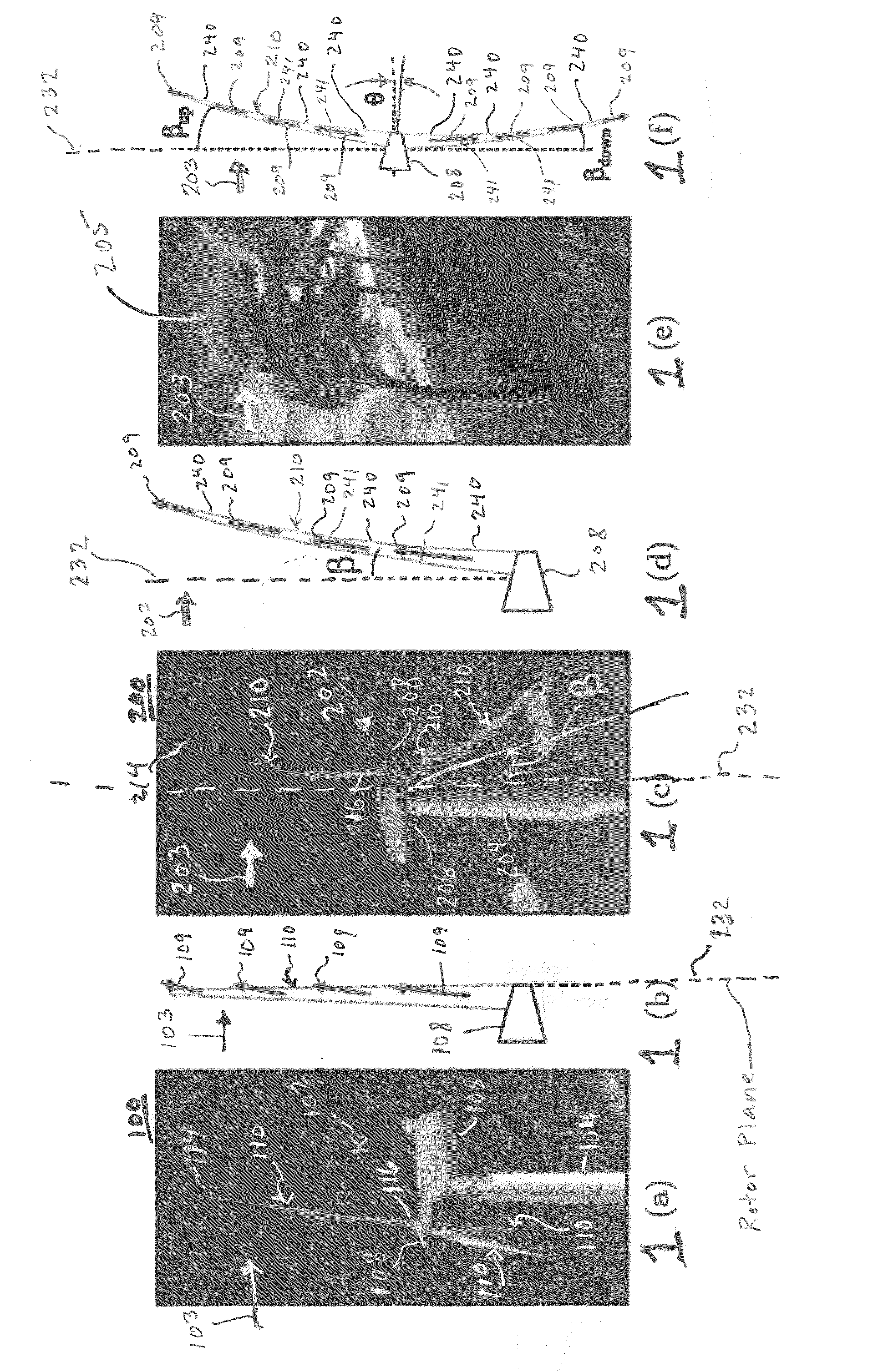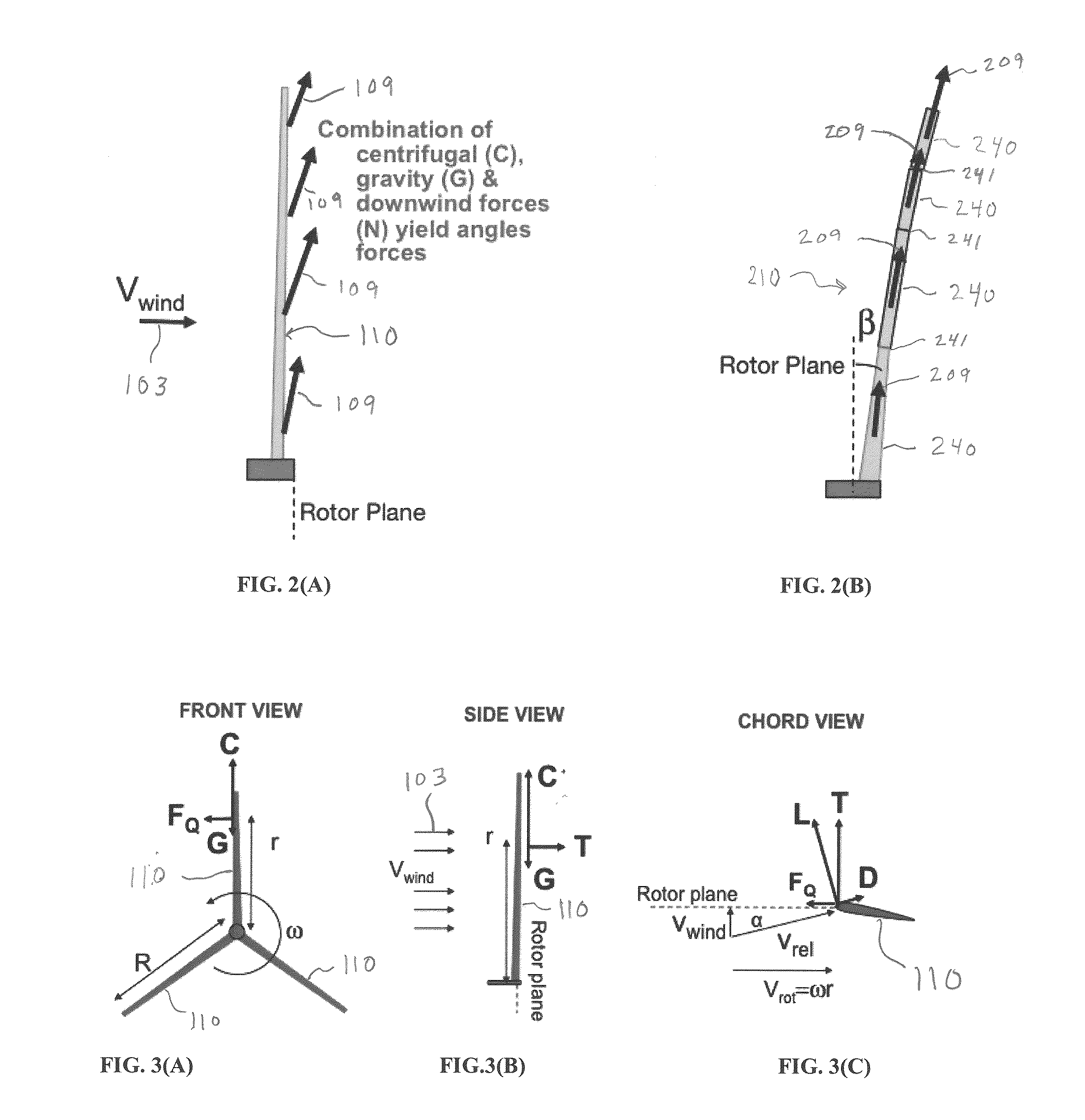Morphing segmented wind turbine and related method
- Summary
- Abstract
- Description
- Claims
- Application Information
AI Technical Summary
Benefits of technology
Problems solved by technology
Method used
Image
Examples
examples
[0065]Practice of an aspect of an embodiment (or embodiments) of the invention will be still more fully understood from the following examples and experimental results, which are presented herein for illustration only and should not be construed as limiting the invention in any way.
example set no.1
Example Set No. 1
[0066]To demonstrate reduction of structural stresses and blade mass, finite element analysis (FEA) has been conducted by the Applicants at rated power conditions for conventional vs. segmented morphing rotors. The simulated rotors employed a fiberglass shell with the aerodynamic mold lines (including airfoil shape, size, and twist as a function of rotor radius) of the NREL 5 MW reference turbine blade, but scaled (See Jonkman, J., Butterfield, S., Musial, W., Scott, G., “Definition of a 5-MW reference wind turbine for offshore system development,” NREL Technical Publishing, 2009(NREL / TP-500-38060, of which is hereby incorporated by reference herein in its entirety.) to a 10 MW system. The surface discretizations are shown in FIGS. 7(A) and 7(b). The downwind morphed geometry was determined based on a zero net moment in the downstream direction but retained the finite torque-wise (power-producing) moment about the hub axis.
[0067]The von Mises stresses for the conven...
example set no.2
Transformational Cost Reduction
[0068]The various aspects of embodiments of the present invention SUMR design directly addresses, among other things, cost of energy (COE) reduction goals for offshore or land wind turbines in a number of ways. The morphing rotor design of various embodiments of the present invention significantly reduces both of the rotor and overall turbine fatigue and extreme loads, allowing a significant mass and cost reduction both in the rotor itself and in the balance of the turbine's overall load path. The reduction in loads and tower head mass allows the reduction of mass and cost for the turbine tower and foundation system as well.
[0069]Referring to Tables, 1, 2 and 3, to illustrate the potential COE reductions possible with a next generation offshore wind turbine based on the SUMR turbine, the proposed configuration has been compared to a baseline turbine design using the NREL Wind Turbine Design Cost and Scaling Model, see Table 1. The NREL model defines a ...
PUM
| Property | Measurement | Unit |
|---|---|---|
| Force | aaaaa | aaaaa |
| Angle | aaaaa | aaaaa |
| Centrifugal force | aaaaa | aaaaa |
Abstract
Description
Claims
Application Information
 Login to View More
Login to View More - R&D
- Intellectual Property
- Life Sciences
- Materials
- Tech Scout
- Unparalleled Data Quality
- Higher Quality Content
- 60% Fewer Hallucinations
Browse by: Latest US Patents, China's latest patents, Technical Efficacy Thesaurus, Application Domain, Technology Topic, Popular Technical Reports.
© 2025 PatSnap. All rights reserved.Legal|Privacy policy|Modern Slavery Act Transparency Statement|Sitemap|About US| Contact US: help@patsnap.com



